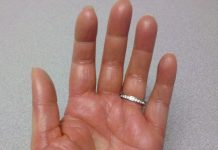Are you at risk of melanoma skin cancer? Melanoma skin cancer should be treated immediately; otherwise it can lead to death.
Melanoma is originated from the melanocytes cells which are a malignant tumor. These cells are responsible for the production of the melanin pigment that gives color to the hair, eyes and skin.
Risk for melanoma skin cancer:
Every one is at risk of getting this skin cancer. Some of the risk factors are:
Skin type: People with fairer skin are at higher risk of getting this disease.
Moles: The normal moles that are small grow to brown blemishes or “beauty marks” that appears in the first few years of life.
The typical moles can also cause cancer. Apart from the types, the number of moles can increase the risk of melanoma.
Sun exposure: Both UVA and UVB rays are harmful to the skin and cause skin cancer. Sun burns and blistering also increase the risk in childhood.
People living in places like Australia, Hawaii and Florida that get more sunlight can get more skin cancer. Avoid tanning bed or tanning booth as they can expose to the UV rays that can lead to the skin cancer and melanoma.
Weakened immune system: Chemotherapy, excessive sun exposure, an organ transplant, and diseases such as HIV/AIDS or lymphoma as a result of compromised immune systems can increase your risk of cancer.
Family history: Patients who are diagnosed have the family history of melanoma. If your father, mother, siblings or children have had a melanoma, then you are in a melanoma-prone family.
Personal history: People with squamous cell carcinoma and basal cell carcinoma are at higher risk of increased melanoma.
The first sign of melanoma is change in the color, shape, size or feel of an existing mole. When you observe these changes on your skin, consult the doctor immediately to get the treatment.
Melanoma can greatly vary and can show the abnormalities in the color, diameter, asymmetry and border of the skin.
Skin examination is done by the health care provider (Dermatologist). Report immediately to the dermatologist, if there is a change in the mole on your skin.
Melanoma can be cured by treating or diagnosing the tumors when they are thin and has not deeply invaded the skin.
If the melanoma is not treated at early stages, then the cancer cells can invade deep into the tissue and affect them. If it becomes deep and thick, then the disease can spread to other parts making it difficult to cure.
Biopsy is the method to diagnose the melanoma skin cancer. Biopsy is done under local anesthesia. It is also helpful for the pathologist to check the tissue for cancer cells.
People with melanoma are treated by surgery, biological therapy and chemotherapy or radiation therapy.














